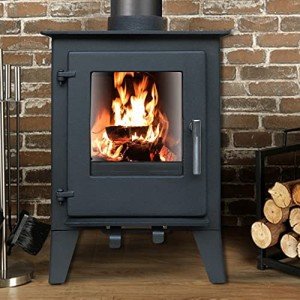Burning Wood on a Multi-Fuel Stove: The Complete Guide
Multi-fuel stoves are popular options for homeowners aiming to efficiently warm their spaces. By enabling users to burn numerous types of fuel, consisting of wood, these stoves offer versatility and benefit. This short article talks about the benefits of burning wood on a multi-fuel stove, the best practices for doing so, and responses frequently asked questions about their use.
Advantages of Burning Wood on a Multi-Fuel Stove
Burning wood on a multi-fuel stove supplies a number of advantages:
- Cost-effective Heating: Wood is frequently quicker offered and less expensive than other fuels such as oil or electrical power. This can result in considerable cost savings on heating bills.
- Environmentally Friendly: Wood burning is typically more sustainable than fossil fuels, especially if the wood is sourced from local or sustainably handled forests.
- Self-reliance from Electricity: A multi-fuel stove can run without electrical energy, making it a trusted option throughout power blackouts.
- Visual Appeal: Many property owners appreciate the heat and atmosphere developed by a wood fire, including a cozy element to their home decor.
Picking the Right Wood
Not all wood is created equal when it pertains to burning in a multi-fuel stove. Here's a list of the very best kinds of wood for burning:
Best Types of Wood for Burning
- Hardwoods:
- Oak: Burns slowly and supplies a high heat output.
- Maple: Offers a hot, constant burn.
- Hickory: Known for its high heat and enjoyable aroma.
- Softwoods:
- Pine: Burns rapidly and hot however produces more creosote, so less more suitable for routine use.
- Spruce: Similar to pine, it sparks quickly.
Woods to Avoid
- Treated or Painted Wood: Releases damaging chemicals when burned.
- Softwoods with High Resin Content: Can lead to extreme creosote accumulation in chimneys.
- Wet or Green Wood: Contains moisture that decreases heat output and increases smoke.
Best Practices for Burning Wood on a Multi-Fuel Stove
To ensure optimum performance and performance when burning wood on a multi-fuel stove, follow these best practices:
- Season the Wood: Use seasoned wood that has been dried for at least six months. This decreases wetness content and enhances burning performance.
- Prepare the Stove: Make sure the multi-fuel stove is clean and properly ventilated before starting a fire.
- Start With Kindling: Use dry kindling and small pieces of wood to get your fire started. Gradually add larger pieces as the fire develops.
- Control Airflow: Most multi-fuel stoves have adjustable air controls. Handle airflow for efficient burning-- open it wide when beginning the fire and gradually lower as the fire starts.
- Regular Maintenance: Have the stove and chimney inspected frequently for creosote accumulation and other problems to ensure safe operation.
- Store Wood Properly: Stack firewood off the ground and cover it to safeguard it from rain and snow, guaranteeing it dries appropriately.
A Typical Wood-Burning Process
- Select seasoned hardwood logs.
- Location crumpled paper and kindling in the stove.
- Light the newspaper and let the kindling catch fire.
- Add bigger logs slowly to preserve the fire and make sure a steady burn.
- Display the stove's temperature level and change air consumption as required.
Security Tips
Burning wood can be cozy and efficient, but security should always be a priority. Here are some important security suggestions:
- Install Carbon Monoxide Detectors: Ensure your home has operating detectors and change the batteries frequently.
- Use a Stove Thermometer: This helps keep an eye on the temperature to avoid overheating.
- Keep Flammable Materials Away: Maintain a safe range between the stove and any combustible materials such as furniture or curtains.
- Have a Fire Extinguisher Nearby: Choosing a fire extinguisher ranked for both wood and combustible liquids adds an important precaution.
FAQs
1. Can any type of wood be burned in a multi-fuel stove?
Not all wood appropriates for burning. It's best to utilize experienced hardwoods for the best performance and effectiveness. Prevent dealt with wood, damp wood, and softwoods with high resin material.
2. How often should I clean my multi-fuel stove?
Regular cleansing is important for safety and effectiveness. It's usually recommended to clean your stove and chimney as soon as a year, or more frequently if you burn a great deal of wood.
3. What is the very best way to store firewood?
Fire wood needs to be kept in a dry, well-ventilated area off the ground. Cover it with a tarp to safeguard it from rain while enabling airflow.
4. How do Multi Fuel Wood Burning Stove avoid creosote accumulation in my chimney?
To avoid creosote accumulation, always use seasoned wood, keep proper air flow, and have your chimney checked and cleaned frequently.
5. Is utilizing Multi Fuel And Wood Burning Stoves -fuel stove safe for indoor usage?
Yes, multi-fuel stoves are created for indoor use. However, correct installation, regular maintenance, and appropriate ventilation are important for safe operation.
Burning wood in a multi-fuel stove can be an exceptional option for effective and sustainable heating. It enables property owners to take advantage of sustainable energy sources while taking pleasure in the standard heat and aesthetics of wood fire. By picking the right wood and sticking to best practices, one can make sure a safe, effective, and pleasurable heating experience throughout the chillier months.

